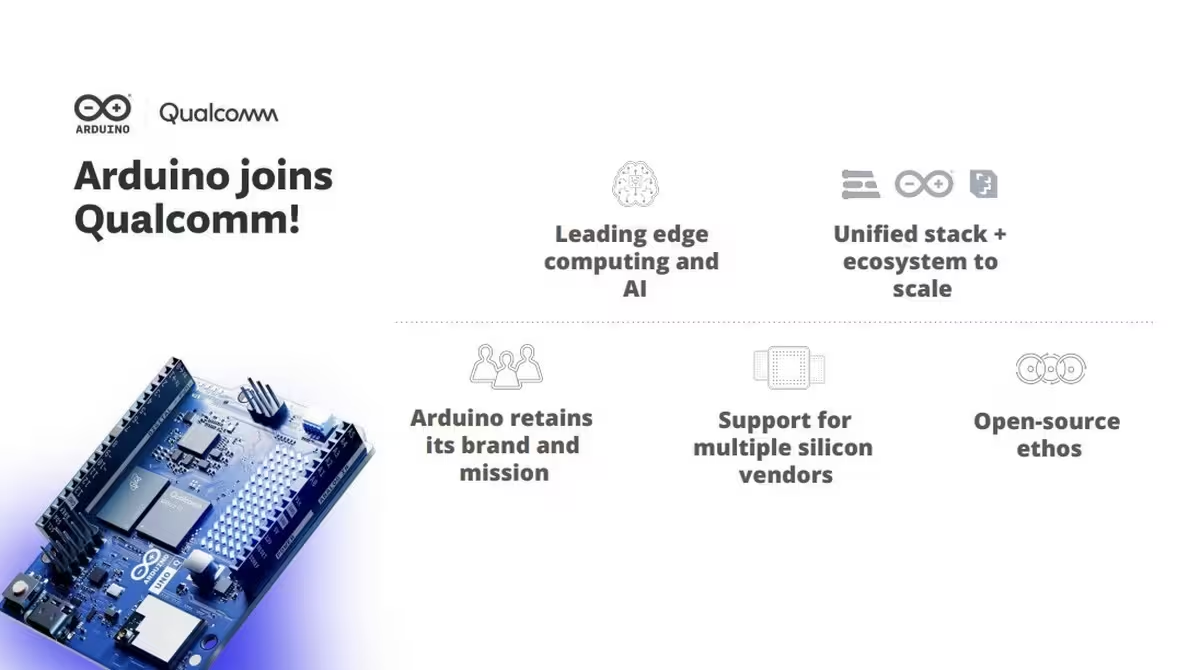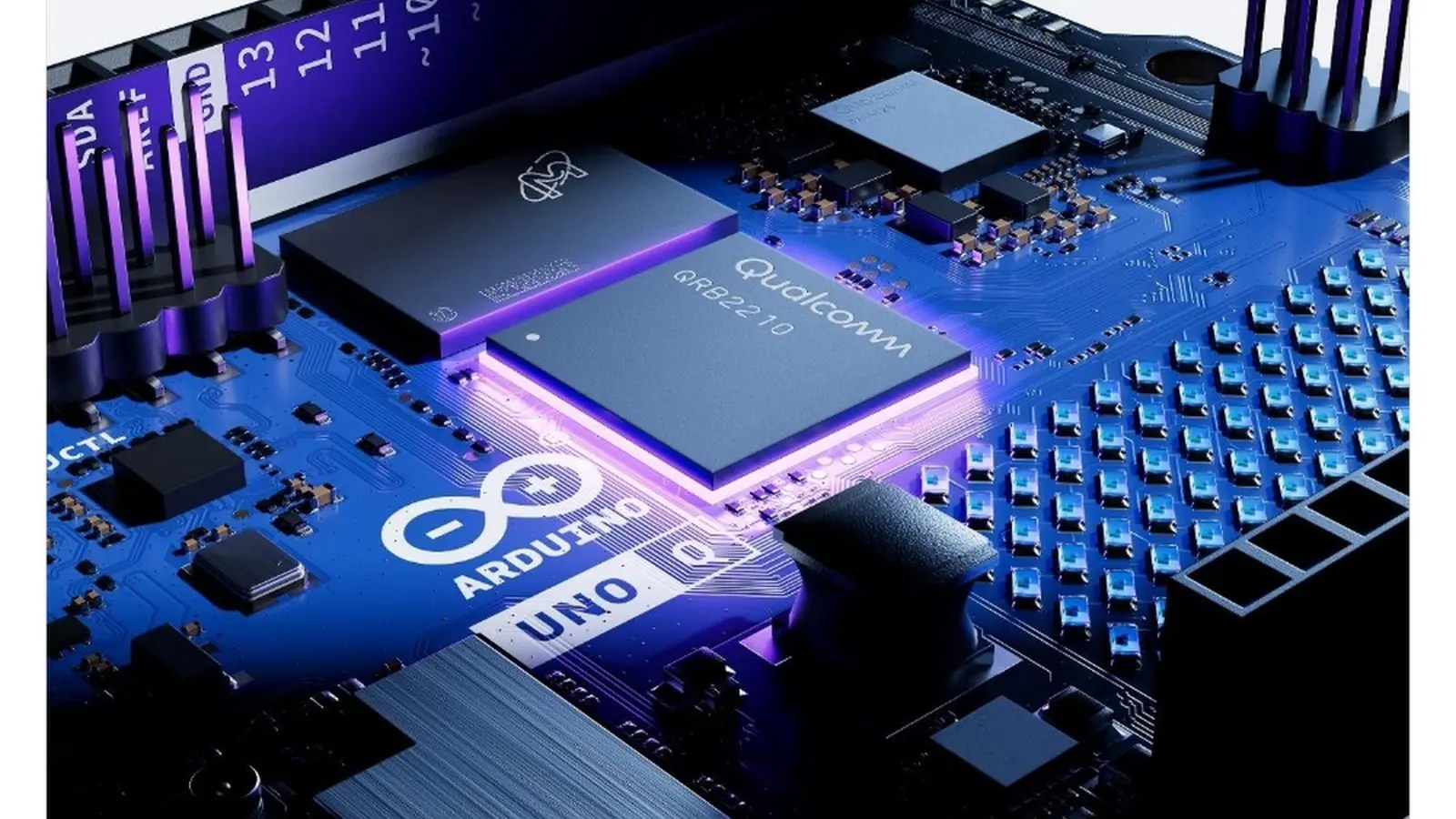3 Minutes
Qualcomm has announced the acquisition of Arduino and introduced the Arduino Uno Q along with a new Arduino App Lab. The move promises to marry Arduino's expansive maker ecosystem with Qualcomm's edge AI and processor expertise.
What this deal means for the maker community
According to Qualcomm, Arduino will remain an independent brand and continue to support a broad range of microcontrollers and microprocessors from multiple semiconductor vendors. For the platform's estimated 33 million active users, the acquisition should unlock access to Qualcomm's technology stack and global distribution channels.
Imagine familiar Arduino workflows backed by silicon designed for AI at the edge. That could speed up prototypes and bring more intelligent, responsive devices into homes and factories alike.
Meet the Arduino Uno Q: a dual brain for edge AI
The Arduino Uno Q is being positioned as a next-generation single board computer. Its defining characteristic is a "dual brain" architecture that pairs a full Linux environment with a real-time microcontroller, offering flexibility for both high-level applications and time-sensitive tasks.

- Processor: Qualcomm Dragonwing QRB2210, running Debian-capable Linux
- Architecture: Linux-capable microprocessor plus a real-time microcontroller for deterministic control
- Target use cases: AI-powered vision and audio solutions, smart home devices, industrial automation, and more
- Developer-friendly: Maintains compatibility with the Arduino IDE and the wider Uno ecosystem
App Lab and Edge Impulse integration
Arduino App Lab is introduced as an open-source environment meant to streamline the path from idea to production. It unifies development across real-time OS, Linux, Python, and AI workflows, and the Uno Q is the first board to officially support it.
App Lab also integrates with Edge Impulse to accelerate building, fine-tuning, and optimizing AI models with real-world data. Typical applications include object and person detection, anomaly detection, ambient sound recognition, and keyword spotting — all useful for developers building intelligent, context-aware edge devices.
For makers and companies wondering what to expect next: the acquisition signals stronger tooling and hardware for edge AI while keeping Arduino's accessible ecosystem intact. That could mean faster prototyping, easier model deployment, and a smoother upgrade path from hobby projects to commercial products.
Source: gsmarena


Leave a Comment